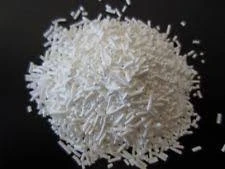
direct food additives
Understanding Direct Food Additives Purpose, Types, and Safety
Direct food additives are substances intentionally added to food products to enhance their flavor, appearance, or shelf life. These additives play a crucial role in modern food production, helping to ensure food safety, improve food quality, and meet consumer preferences. Understanding the categories, functions, and safety regulations surrounding direct food additives is essential for both consumers and producers.
Categories of Direct Food Additives
Direct food additives can be classified into several categories based on their purposes
1. Preservatives These additives inhibit microbial growth and increase the shelf life of food products. Common preservatives include sodium benzoate and potassium sorbate, which are often found in beverages and baked goods.
2. Flavor Enhancers Substances such as monosodium glutamate (MSG) enhance the overall taste of food without imparting a distinct flavor. They are commonly used in savory products, snacks, and seasonings.
3. Color Additives Colorants, including natural extracts like beet juice or synthetic dyes such as Red 40, are used to enhance or restore the color of food, making it more visually appealing to consumers.
4. Texture Agents These additives modify the texture of food products. For instance, stabilizers like xanthan gum and emulsifiers like lecithin improve the consistency and prevent separation in products like salad dressings and sauces.
5. Nutritional Additives Vitamins and minerals are added to fortify foods and address nutrient deficiencies. For example, vitamin D is often added to milk, while folic acid is included in cereals to support public health initiatives.
direct food additives

Importance of Direct Food Additives
The use of direct food additives has transformed the food processing industry, offering several benefits
- Food Safety Additives help prevent spoilage and foodborne illnesses by controlling microbial growth. This is particularly vital for perishable items. - Cost-Effectiveness By preventing spoilage and extending shelf life, food additives can reduce waste and lower production costs, leading to more affordable food products for consumers.
- Consumer Preferences As consumer taste and dietary preferences evolve, food additives enable manufacturers to create products that meet those needs, whether through enhanced flavor, appearance, or nutritional content.
Safety Regulations
While direct food additives offer numerous benefits, their use is strictly regulated to ensure consumer safety. In the United States, the Food and Drug Administration (FDA) oversees the approval and regulation of food additives. Before an additive can be used in food products, it must undergo rigorous testing to assess its safety. The FDA establishes acceptable daily intake levels for each substance to prevent adverse health effects.
Moreover, food manufacturers are required to comply with labeling laws, which means that any direct food additive must be clearly stated on the packaging. This transparency allows consumers to make informed choices about the products they consume.
Conclusion
Direct food additives are an integral part of the modern food supply chain, serving various functions that enhance food safety, quality, and aesthetics. While they are essential in helping manufacturers meet consumer demands and maintain food stability, their safety remains a priority under strict regulatory oversight. By understanding what direct food additives are and how they affect the foods we eat, consumers can make informed decisions and enjoy the benefits of modern food technology.
-
nitrile-rubber-honoring-strict-production-standardsNewsAug.22,2025
-
aspartame-ingredients-honoring-food-safety-valuesNewsAug.22,2025
-
fertilizer-for-balanced-plant-nutritionNewsAug.22,2025
-
cyanide-gold-processing-with-high-purity-additivesNewsAug.22,2025
-
formic-acid-in-textile-dyeing-applicationsNewsAug.22,2025
-
aluminum-hydroxide-gel-in-skincare-productsNewsAug.22,2025
-
Regulatory Compliance for Global Mining Chemicals UseNewsAug.12,2025
Hebei Tenger Chemical Technology Co., Ltd. focuses on the chemical industry and is committed to the export service of chemical raw materials.
-

view more DiethanolisopropanolamineIn the ever-growing field of chemical solutions, diethanolisopropanolamine (DEIPA) stands out as a versatile and important compound. Due to its unique chemical structure and properties, DEIPA is of interest to various industries including construction, personal care, and agriculture. -

view more TriisopropanolamineTriisopropanolamine (TIPA) alkanol amine substance, is a kind of alcohol amine compound with amino and alcohol hydroxyl, and because of its molecules contains both amino and hydroxyl. -

view more Tetramethyl Thiuram DisulfideTetramethyl thiuram disulfide, also known as TMTD, is a white to light-yellow powder with a distinct sulfur-like odor. It is soluble in organic solvents such as benzene, acetone, and ethyl acetate, making it highly versatile for use in different formulations. TMTD is known for its excellent vulcanization acceleration properties, which makes it a key ingredient in the production of rubber products. Additionally, it acts as an effective fungicide and bactericide, making it valuable in agricultural applications. Its high purity and stability ensure consistent performance, making it a preferred choice for manufacturers across various industries.





